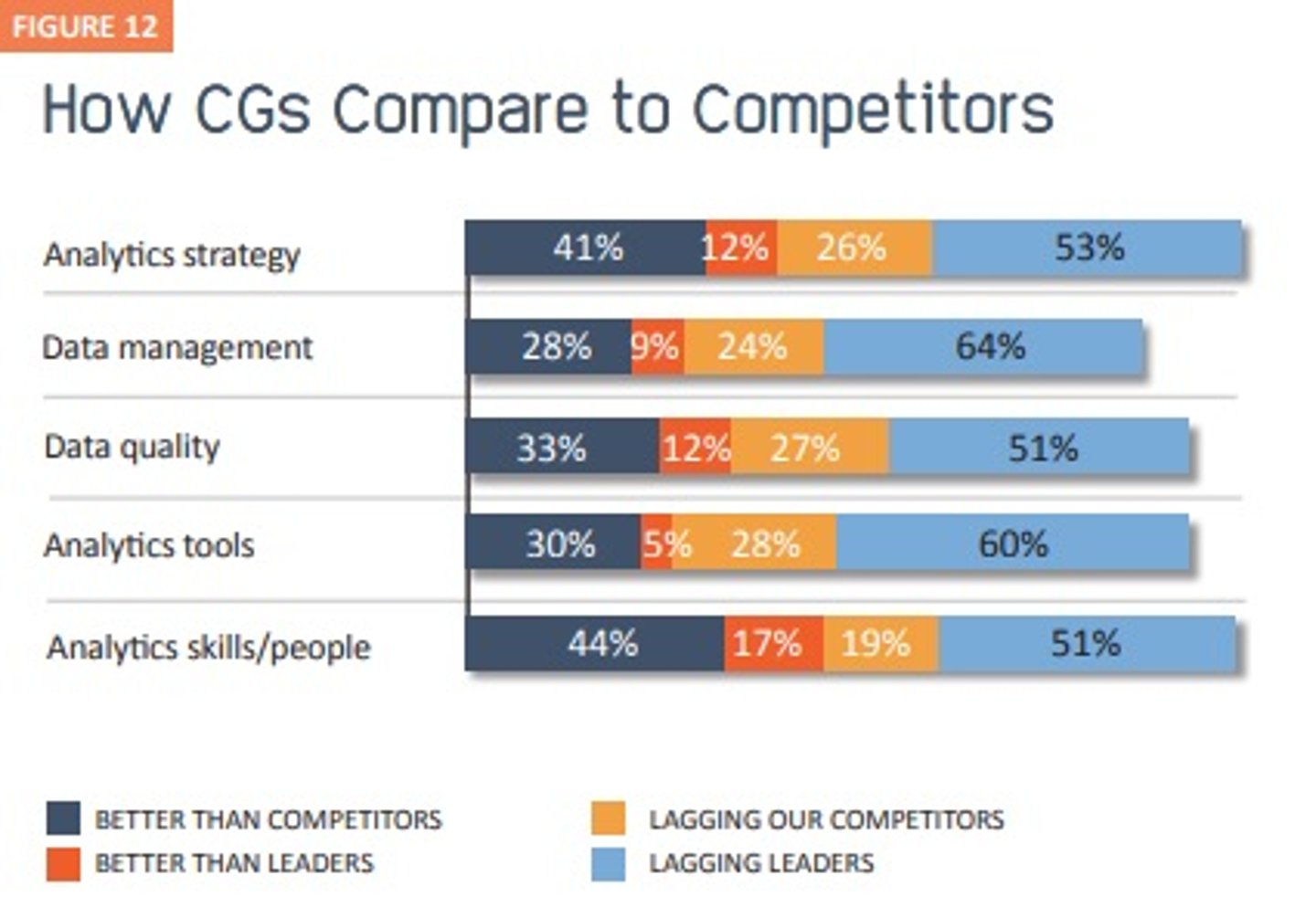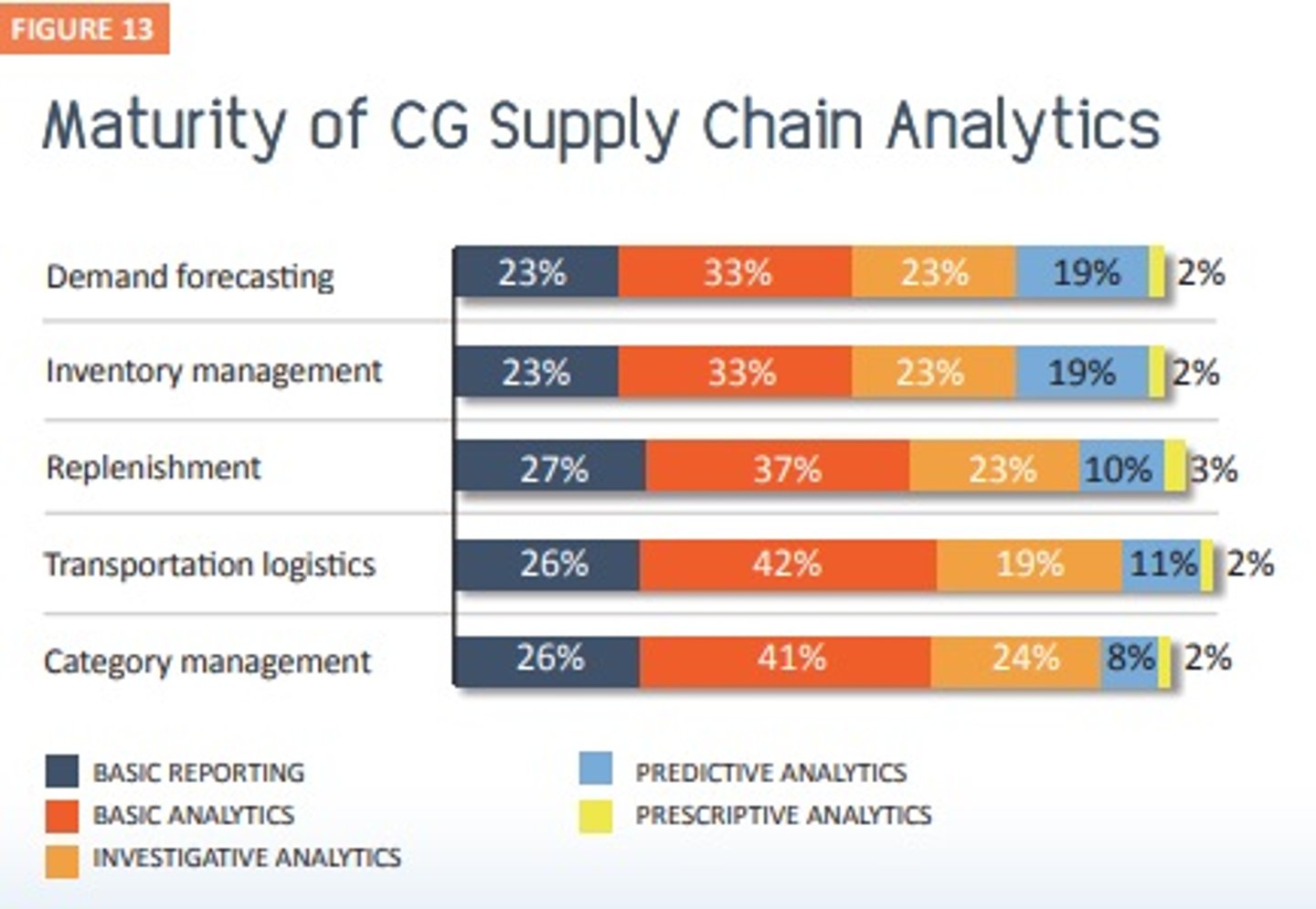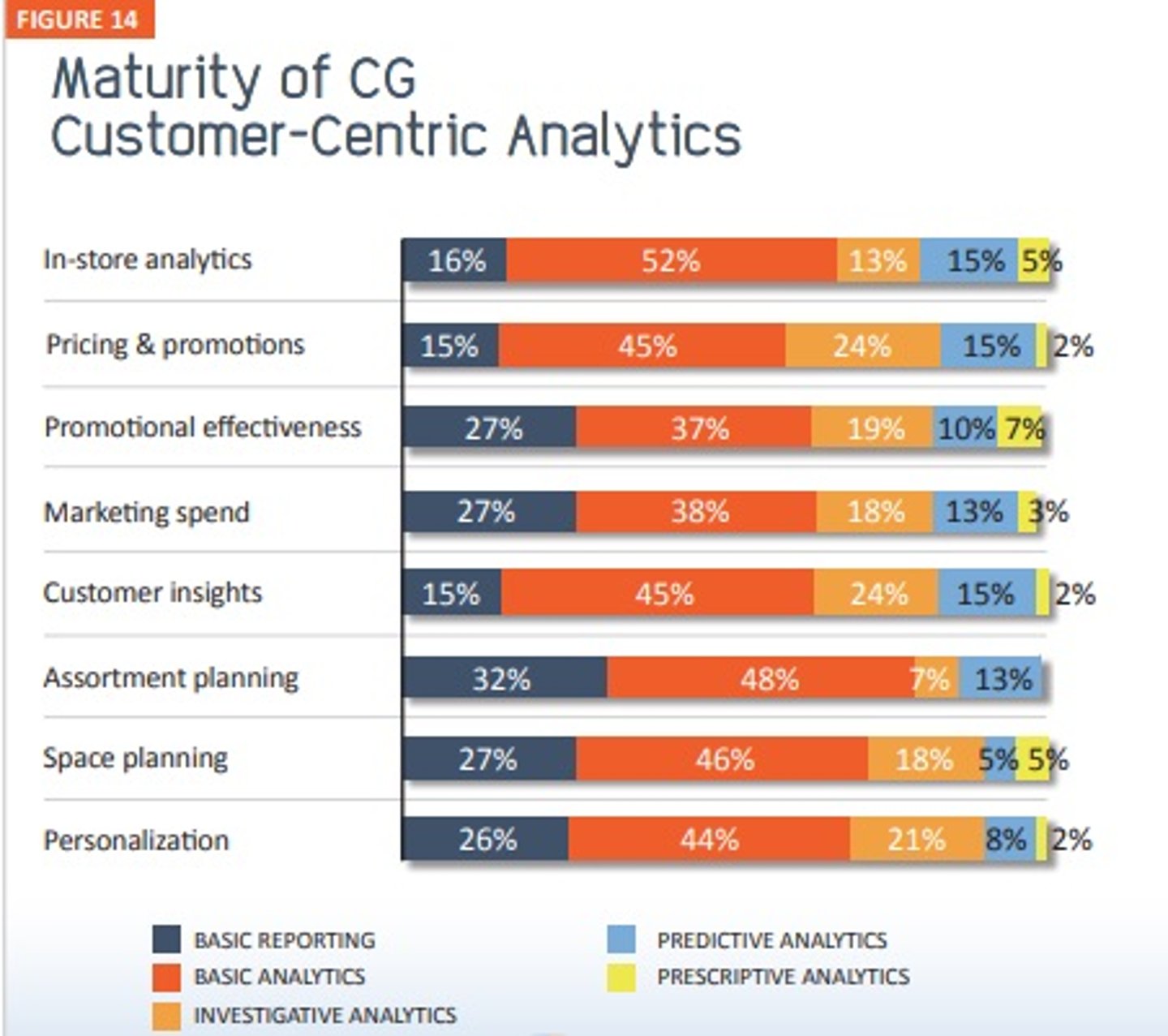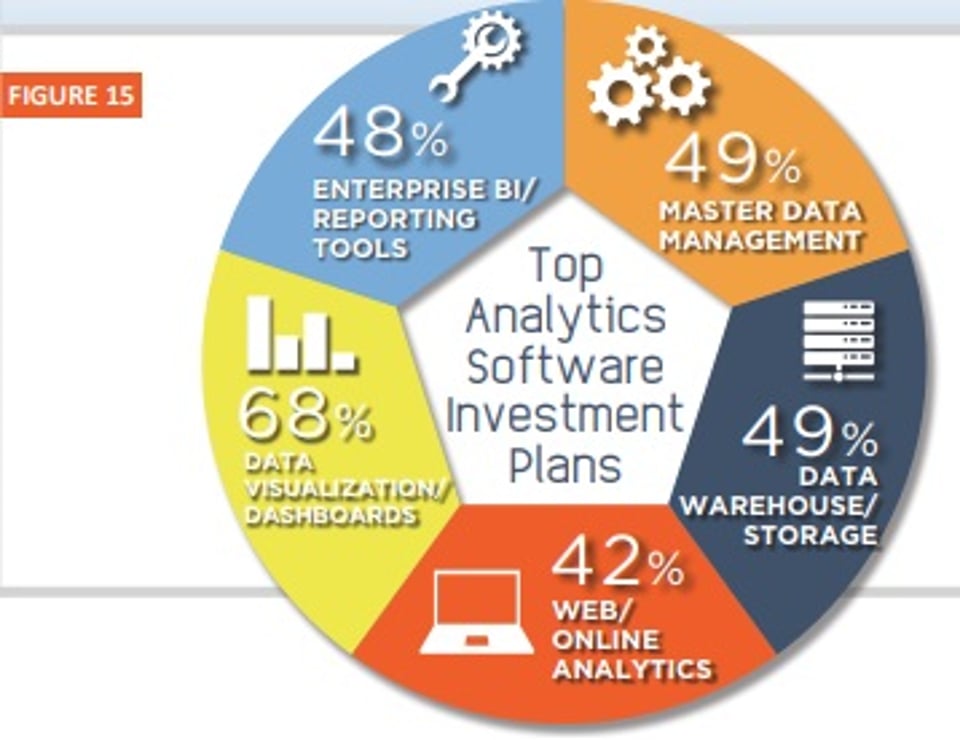Retail and Consumer Goods Analytics Study 2018: Consumer Goods
Consumer goods companies have been leveraging analytics for a long time. But only recently has data become plentiful enough and tools powerful and accessible enough to truly transform the way they run their businesses. Making that technical and cultural transformation is key to competing in an increasingly complex, demanding marketplace where sales channels, marketing strategies and consumer expectations are in constant flux.
Most analysts agree that the ability to exploit advanced analytics will be the key to future success — even the key to survival. And CG executives are racing to focus their often limited resources in the right places to gain that critical competitive advantage. Many have made admirable gains in the past year — but will it be enough to set them apart?
Benchmarking Analytics Progress
Competitors are a valuable benchmark for measuring progress. When consumer goods companies compare themselves to peers, they report a significant jump in their analytics skills and people, with 44% saying they’re better or significantly better than competitors, versus just 11% in 2016. They also made advancements in analytics tools, with the ranks of companies believing they’re beating competitors moving from 11% to 30%. Strategy is another area where significant numbers of CG companies (42%) feel they do well against the competition (Figure 12).
But those numbers drop considerably when CG companies compare themselves to industry leaders. Just 17% believe their analytics skills/people are better or significantly better, for example, and only 5% feel that way about their tools.
Unfortunately, even comparing against leaders may not be enough to fully measure the gap between where businesses are and where they need to be.
“Comparing your analytics savviness to your traditional industry competitors is no longer sufficient,” says Andrew Walter of AJW-Advisory LLC, a retired vice president of IT & shared services at Procter & Gamble. “Consumer goods companies and retailers need to benchmark versus the best across industries. Digital and analytics disruption is blurring traditional competitive threats and business opportunities, so competing with analytics is more critical than ever.”
Advancing the Maturity Needle
With margins thinning and limited resources at their disposal, CG companies must be strategic when allocating investment dollars to improve analytics capabilities. Self-assessment of maturity in supply chain analytics indicates that companies have gained the most value in demand forecasting (with 21% using predictive or prescriptive analytics) and inventory management (16%), two functions that have a huge impact on the bottom line. Both results represent improvement from last year, with inventory management gaining 16 percentage points. Space planning, customer insights and assortment planning — all of which require analyzing patterns in high volumes of data — are the consumer-centric areas where CG companies are the most advanced (Figure 13).
Analytics maturity in any one area, however, is less important than how companies are supporting the bigger picture, says Vittorio Cretella, founder of VCAdvisory and former chief information officer of Mars, Inc. “True competitive advantage comes from the capability to connect insights from those areas into a timely, end-to-end view of business activities. “Understanding correlations — how a promotion is affected by social sentiment and the related impact on its profitability in nearly real-time, for example — will give a CG the decision-making agility required in an increasingly dynamic market environment.”
Top Analytics Software Plans
The ability to put newfound insights to good use is clearly on the minds of CG executives. Many planned investments are aimed at creating the essential infrastructure to ensure that data is collected, cleansed, analyzed and delivered to those who can best act quickly to apply it. Data visualization/ dashboards (68%) are a clear priority, reflecting a widespread effort within CG companies to move data outside individual business units and put it in front of more decision-makers across the business (Figure 15).
At the same time they’re building out core infrastructure, CGs are eyeing next-gen approaches that could help them accelerate efforts to move forward. Because so much rides on gleaning meaningful insights out of massive and growing streams of data, they’re prioritizing cloud infrastructure, big data analytics and personalization initiatives (Figure 16). These areas rank even higher than efforts involving artificial intelligence/machine learning and the Internet of Things. Clearly, early reservations about the cloud model have fallen away. In fact, CGT’s “Tech Trends Report 2017” found that 61% of companies already have moved to the cloud, the most commonly adopted step toward digital transformation.
That doesn’t mean AI and machine learning are not important, however. Both technologies are new to the industry, and CGs are testing them across a wide range of areas led by demand planning & forecasting and trade promotions (Figure 17). Other early deployments span marketing and supply chain functions.
“Most retailers and CG companies are just starting to realize the potential of AI as far as analytics goes,” says Sahir Anand, managing vice president, research & strategy for EnsembleIQ Research Solutions. “CG companies must apply AI and machine learning to read patterns within functional areas so that they can provide predictive trends and insights across the organization — to category managers, planners, pricing managers and supply chain executives.”
Anand recommends that CGs invest in machine learning, natural language processing (NLP) and robotics. “Within machine learning, the best areas of investment are demand forecasting, replenishment, pricing and trade promotion, since [the technology] can help read patterns of information in a self-learning manner as well as provide predictive data and scenario-based modeling of outcomes,” he says. “NLP can solve many problems within the supply chain, such as voice-assisted routing or picking. Robotics can help in production line automation and warehouse automation, like pallet movement and pick-pack-ship.”
Plenty of Road Ahead
CG companies can feel good about the progress they’ve made in obtaining the more advanced technologies and skills needed to compete in an insights-driven marketplace. They’ve made important progress in several key areas, including demand forecasting and inventory management. But as the competitive universe expands, they’ll need to move aggressively to implement more transformative tools such as cloud infrastructure and AI.
Companies that find a way to infuse advanced analytics capabilities into decision-making processes across the organization stand to gain significant ground against the competition and a deeper understanding of today’s ever-evolving consumers.
To read the study, click on the links below:
Editor's Note: Hare Today, or Gone Tomorrow
Overview: Analytics Maturity Is a Moving Target
Retailers: Wielding Analytics in the Battle for Customers
Consumer Goods: Sharpening the Analytics Toolset
To download the full study, click on the attachment below.








